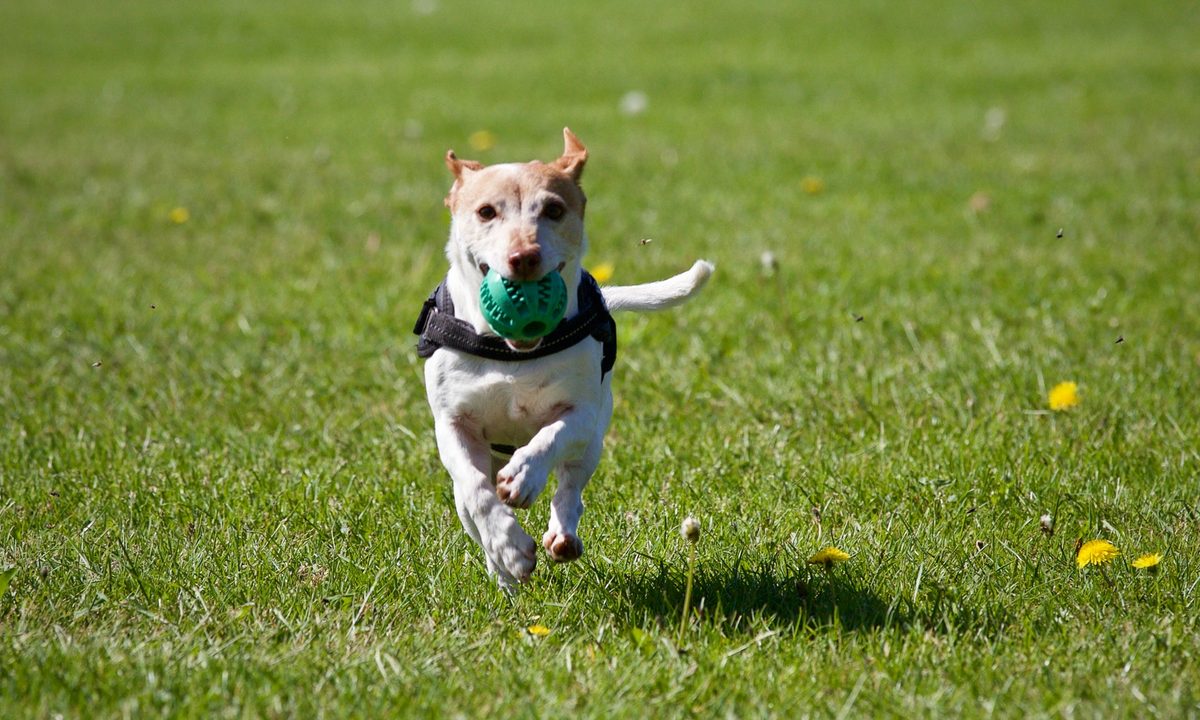Trying to teach your dog basic commands can be an uphill battle. If your dog doesn't respect you, then chances are they won't want to listen to you, either. Once your dog recognizes you as pack alpha, you'll be able to lay down the rules and have your dog jump to follow your orders — no yelling or pleading necessary. Training is important. Well-trained dogs do better in social situations, and commands like "stay" and "leave it" can be life-saving. How can a doting pet parent command respect and help their dog be friendly, polite, and obedient? Follow these tips for respect training for dogs.

Teach your dog what’s allowed and what isn’t
Teaching a puppy respect training is easier and takes less time than teaching an older dog, but it is possible. The first step you need to take is teaching your dog simple obedience.
Step 1: Find a spot where you can work on obedience training for 10 to 15 minutes a day without any interruptions. Spending any longer than 15 minutes pushes the boundaries of your dog’s attention span too far, so they won’t really pay attention after that.
Step 2: Grab some of your dog’s food or favorite treats and a leash.
Step 3: If you’re teaching your dog to heel, tell them “heel."
Step 4: Lead the dog with a treat while keeping hold of the leash.
Step 5: You can give it a gentle tug to encourage your dog to follow, but don’t yank on the leash.
Discipline bad behavior
When you’re training your dog, it’s the best time to teach them not to jump when they see food. These steps also work for teaching your dog to sit, stay, roll over, or any trick you want to teach them. Never spray your dog directly in the eyes, nose, or mouth, but make sure you get their attention, so they learn that being naughty and rambunctious results in getting sprayed.
Step 1: If your dog jumps for their treat during training, firmly tell them, “no."
Step 2: When your dog follows your command to heel without jumping, give them a treat and lots of attention as a reward for good behavior.

Make sure your dog feels protected
Some dogs are anxious, and in order for your dog to respect you, they also need to trust you. When your dog feels safe with you, they’ll also feel safe to follow your commands without trying to take the lead.
Step 1: Make sure your dog feels calm and safe when you’re out for walks.
Step 2: If you notice your dog is nervous around other dogs, make sure you stay between your dog and others.
Step 3: Always maintain the position of pack alpha, so that your dog knows who’s in charge.
Step 4: If your dog is frightened of loud sounds, give them a quick cuddle and lots of love. This will help them feel safe in the moment, and it will further cement the idea that you’re the one in the protector role.

Be firm and consistent, but never be aggressive
Yelling at your dog is the human equivalent of barking at them. Teaching your dog to respond with aggression will only make them feel the need to assert their dominance, which is the opposite of what you want. Be consistent in your training.
If you’re training a puppy, you may want to take a page from a mama dog’s book and scruff them. Picking up a puppy by the scruff of their neck and firmly telling them “no” is an effective training technique that doesn’t harm your puppy.
As your dog ages, you can still grab them by the scruff as a means of establishing your position as pack alpha. Just make sure you’re gentle, and don’t try to pick up an adult dog this way, as it places too much weight on the neck.

Spend quality time together
One of the best ways to earn your dog’s respect is simply spending time together outside of training and playtime. This teaches your dog they can relax with you, and it’s a great bonding experience.
Step 1: Make sure your dog is happy and well fed.
Step 2: Spend some quiet time together watching television or sitting outside.

How do you tell if your dog is trying to dominate you?
Respect training for dogs establishes your position as pack alpha. If your dog hasn’t learned their lesson yet, they may try to guard you from other dogs — even other members of your household — demand playtime by placing toys at your feet after you’ve told them “no,” or refuse to obey your commands. With time, effort, and patience, you can teach your dog to respect you, and these behaviors should stop.
According to the American Kennel Club, the first five things you should teach your dog are:
- Coming when they’re called
- Good loose-leash behavior
- How to sit
- How to stay
- How to lie down

How do I teach my dog to respect other dogs?
Socialization from an early age is critical. Still, sometimes even older dogs can become more comfortable around other pups.
Step 1: Separate the dogs.
This step is only necessary if you are introducing dogs who will be living together. In this case, put the new dog in a separate room during the introduction phase.
Step 2: Meet somewhere neutral.
If possible, choose a neutral spot like a park to introduce dogs to avoid territorial behavior.
Step 3: Don't force it.
Allow the dogs to make the moves toward one another. You might even start with parallel walks where the dogs don't interact at all but peacefully co-exist on the sidewalk.
Step 4: Offer treats for positive behavior.
Whether the pup lying down or calmly approaching the other dog and interacting well, give a treat, ear rub, or praise to assure your pet they're doing well.
Step 5: Be the adult in the room.
If the interaction isn't going well — such as one dog showing aggression or immense fear — end the meeting. You can always try again.
Step 6: Know when to stop.
Some dogs simply need to be the kings and queens of their castles (only pets in the home). If repeated attempts to get your dog to play well with others don't work, you may need to accept your pet for who they are.
Once your dog has mastered these steps, they’ll respect your commands, and you’ll be able to teach your dog any number of tricks. Respect training doesn’t have to be stressful. It takes patience, a few treats, and a bit of time, but it’s well worth it in the end. Your dog will feel happy and safe with you, and you’ll have a best friend who behaves.




